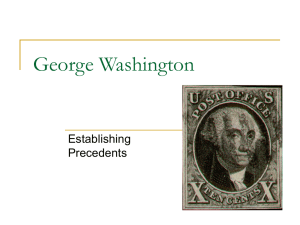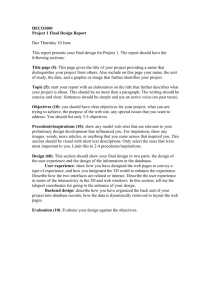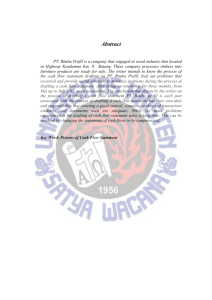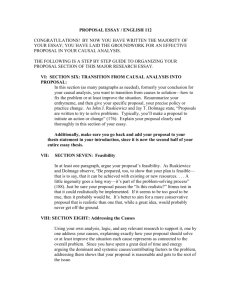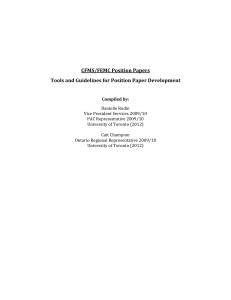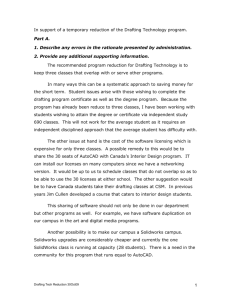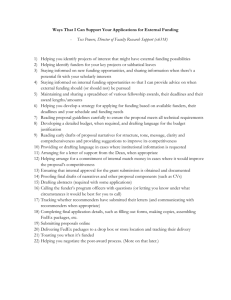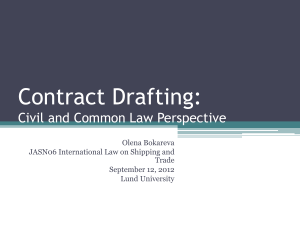Draft legal documents using precedents
advertisement
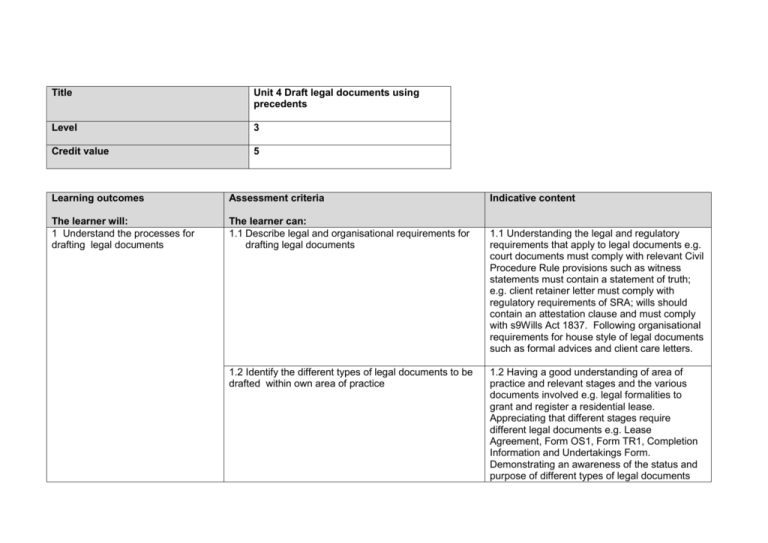
Title Unit 4 Draft legal documents using precedents Level 3 Credit value 5 Learning outcomes Assessment criteria The learner will: 1 Understand the processes for drafting legal documents The learner can: 1.1 Describe legal and organisational requirements for drafting legal documents 1.2 Identify the different types of legal documents to be drafted within own area of practice Indicative content 1.1 Understanding the legal and regulatory requirements that apply to legal documents e.g. court documents must comply with relevant Civil Procedure Rule provisions such as witness statements must contain a statement of truth; e.g. client retainer letter must comply with regulatory requirements of SRA; wills should contain an attestation clause and must comply with s9Wills Act 1837. Following organisational requirements for house style of legal documents such as formal advices and client care letters. 1.2 Having a good understanding of area of practice and relevant stages and the various documents involved e.g. legal formalities to grant and register a residential lease. Appreciating that different stages require different legal documents e.g. Lease Agreement, Form OS1, Form TR1, Completion Information and Undertakings Form. Demonstrating an awareness of the status and purpose of different types of legal documents within area of practice e.g. Damages Based Agreements in both Civil Litigation and Employment set out funding arrangements. 2 Understand the principles of design of legal documents 1.3 Explain how to identify appropriate legal precedent documents 1.3 Distinguishing between types of standard legal documents such as procedural forms e.g. court forms, conveyancing forms, and other legal precedents such as legal agreements e.g. Leases, Wills, or pleadings e.g. statements of case in civil litigation and witness statements for employment tribunals. Ensuring precedent forms are current. Obtaining other legal precedents from departmental or organisation’s precedent bank, or legal service companies such as PLC or LexisPSL. 1.4 Explain how to identify relevant content in precedent documents to be used for drafting purposes 1.4 Distinguishing between ‘boilerplate’ clauses (clauses in an agreement relating to its interpretation and general operation) that may be safe to use for drafting purposes e.g. standard definitions, matters of construction or administration, and clauses relating to the particular subject matter e.g. fees, rights and obligations. Ensuring source of precedent is reliable otherwise may inherit mistakes. Adopting structure rather than content if factual position not the same i.e. using headings, style. Understanding dangers of using content from old precedents that may have archaic language and not reflect current law or which may not make sense and/or be suitable for that particular transaction. 2.1 Identify when it is acceptable to adapt precedents for legal documents 2.1 Ensuring that regulations allow adaptation of standard forms e.g. land registry accepts own organisation’s TR1 forms. Confirming any modifications to content of legal precedents meets with procedural, legal and regulatory requirements e.g. Family Procedural Rules relating to Care Orders are observed; and that the legal effect of the document remains unchanged. 3 Be able to draft legal documents using precedents 2.2 Describe the structure and content of legal documents in your own area of practice 2.2 Implementing the actions and considerations in IC 1.1. Following structure required e.g. for a defence in civil litigation setting out title, parties’ names, heading, paragraph headings, statement of truth. Adapting content to match factual scenario and represent accurate and current law e.g. an application for a Supervision Order shows why a child is likely to suffer ‘significant harm’ if left in the care of the parent e.g. because the level of care being given is not very good, or the child is beyond control. 2.3 Explain how to correct different types of errors in legal documents 2.3 Understanding drafting techniques to prevent use of ‘legal jargon’ as opposed to legal terms of art; easy to understand terms, no repetition of words or paragraphs unless required. Distinguishing between drafting errors e.g. spelling, punctuation, grammar, and substantive errors in content e.g. incorrect or missing information, unnecessary provisions or paragraphs. Understanding process of review following drafting e.g. best practice to print out in hardcopy to read, have a period of reflection before reading through, use of spellcheck to identify typos proof reading to identify drafting errors etc. 3.1 Identify the purpose, content and format details of the legal document 3.1 Understanding the link between the purpose, content and format of legal documents e.g. a Lease Agreement sets out the terms upon which the property is leased such as the fees, rights and obligations of each party and what happens if any term is breached. The content must therefore ensure the client’s position is both reflected and protected, as well as meeting legal requirements to enable the purpose to be fulfilled. The content will be set out in the format required by the law and own organisation. 3.2 Obtain information from relevant sources to inform the content of the legal document including: choice of precedent clauses other relevant information 3.2 Distinguishing between legal and factual sources e.g. client will provide factual information, own organisation has legal information from fee earners’ knowledge, legal resources and precedents. Knowing what resources are available and how to access them. Implementing the actions and considerations in ICs 1.3-1.4. 3.3 Adapt the precedent to suit the purpose of the legal matter 3.3 Implementing the actions and considerations in IC 2.1. 3.4 Prepare draft content of the legal document for review and approval by a supervisor 3.4 Drafting the document implementing the actions and considerations in ACs 1 and 2. Highlighting any areas you want to draw to supervisor’s attention for any reason e.g. lack of information to complete or this is an area of law that is not clear. 3.5 Review draft legal documents to correct any errors with: spelling grammar punctuation inconsistencies missing information 3.5 Implementing the actions and considerations in IC 2.3. Additional information about the unit Unit aim(s) This unit is about understanding the principles and processes of drafting legal documents using precedents and being able to draft legal documents using precedents. Unit review date 31st August 2015 Details of the relationship between the N/A unit and relevant national occupational standards (if appropriate) Details of the relationship between the N/A unit and other standards or curricula (if appropriate) Assessment requirements specified byThis a N/A sector or regulatory body (if appropriate) Endorsement of the unit by a sector or This unit is endorsed by Skills for other appropriate body (if required) Justice, the Sector Skills Council for Legal Services Location of the unit within the Law and Legal Services subject/sector classification system Name of the organisation submitting the CILEx unit Availability for use Shared Availability for delivery 1st September 2013
